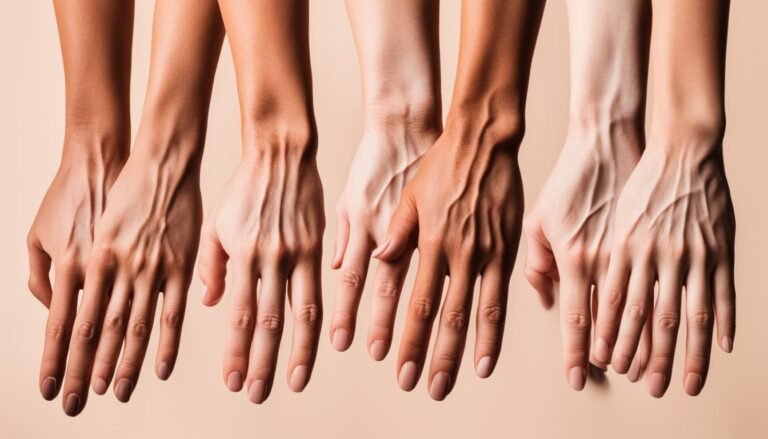What is the difference between fair skin and light skin?
Have you ever wondered about the distinction between fair skin and light skin? Are they simply two ways of saying the same thing, or is there more to it? Understanding the difference between fair skin and light skin can have a significant impact on how you choose and apply skincare products, foundation shades, and even clothing colors.
Many people use the terms “fair skin” and “light skin” interchangeably, assuming they refer to the same concept. But in reality, there is a subtle difference that sets them apart. Fair skin typically refers to the lightest range of skin tones, characterized by a porcelain-like appearance with minimal pigmentation. On the other hand, light skin can have warmer undertones and a slightly darker complexion compared to fair skin.
So, what does this mean for you? Is your skin considered fair or light? Understanding your exact skin tone can help you make better choices when it comes to enhancing your natural beauty and finding the right products that complement your complexion. In this article, we will explore the differences between fair skin and light skin, as well as provide tips on how to determine your own skin tone and undertones.
Key Takeaways:
- Fair skin and light skin have subtle differences in terms of complexion and undertones.
- Fair skin refers to the lightest range of skin tones, while light skin may have warmer undertones.
- Determining your skin tone involves considering both surface color and undertones.
- There are four broad categories of surface color: fair, light, medium, and dark.
- Undertones can be cool, warm, or neutral, and they influence how colors appear against your skin.
Determining Your Skin Tone
To determine your skin tone, you need to consider both surface color and undertones. Surface color refers to how you describe your skin’s appearance, such as fair, light, medium, or dark. Let’s explore the four broad categories of surface color:
| Surface Color | Description |
|---|---|
| Fair | The lightest range, often prone to sunburn and typically associated with light or red hair. |
| Light | Slightly warmer undertones and more likely to tan. |
| Medium | Tan complexion with warm golden or olive undertones. |
| Dark | The deepest range of skin tones. |
Now that we understand surface color, let’s delve into undertones. Undertones are the subtle colors that lie beneath the surface color of your skin. There are three main undertones:
- Cool undertone: characterized by a bluish tone.
- Warm undertone: has more of a golden or peach-colored tone.
- Neutral undertone: neither cool nor warm.
Determining your undertone can be done by various methods. For example, you can look at your veins – blue indicates a cool undertone, while green suggests a warm undertone. Additionally, observing your reaction to sun exposure can provide insights – if you easily burn, you likely have a cool undertone, whereas if you tend to tan, you probably have a warm undertone. You can also compare how different jewelry tones look against your skin to gauge your undertone.
Understanding your skin tone, both in terms of surface color and undertones, is crucial when it comes to selecting the right cosmetics and clothing that complement your complexion.
Expert Tip:
When in doubt about your skin tone, seek assistance from a professional makeup artist or beauty consultant. They have the expertise to analyze your skin and recommend suitable products for your unique complexion.
Decoding Skin Undertones
Your undertone is the subtle color that lies beneath the surface color of your skin. There are three main undertones: cool, warm, and neutral. A cool undertone is characterized by a bluish tone, while a warm undertone has more of a golden or peach-colored tone. Neutral undertones are neither cool nor warm.
To determine your undertone, you can use various methods:
- Look at your veins: Blue veins typically indicate a cool undertone, while green veins suggest a warm undertone.
- Observe your reaction to sun exposure: If you tend to burn easily and struggle to tan, you likely have a cool undertone. If you tan easily, you probably have a warm undertone.
- Compare jewelry tones against your skin: Cool undertones tend to look best with silver or white gold, while warm undertones complement yellow gold.
Determining your undertone is important because it helps guide your choices in makeup, clothing, and accessories. By understanding whether you have a cool, warm, or neutral undertone, you can select shades that enhance your natural beauty and complement your skin tone.
Now, let’s explore the different undertones in more detail:
Cool Undertone
A cool undertone is characterized by a bluish or pinkish hue. Individuals with cool undertones often have fair or medium skin with rosy cheeks. They tend to burn easily in the sun and generally look best in colors like blues, purples, and pinks.
Warm Undertone
A warm undertone has more of a golden or peach-colored tone. Those with warm undertones often have medium or olive skin and tend to tan easily. They look great in earthy shades like yellows, oranges, and warm browns.
Neutral Undertone
A neutral undertone means that your skin has equal parts warm and cool undertones, resulting in a balanced complexion. Individuals with neutral undertones can pull off a wide range of colors and often have medium or beige skin. Neutrals, pastels, and jewel tones all complement this undertone.

Conclusion
Understanding the difference between fair skin and light skin is key to making informed choices when it comes to enhancing your complexion. By considering both surface color and undertones, you can accurately identify your unique skin tone and select cosmetic products and clothing that complement your natural beauty.
Remember, each person’s skin is unique, and what works for one individual may not necessarily work for another. It may take some trial and error to find the perfect match for your skin tone. Don’t be afraid to experiment and explore different options to find what suits you best.
Embracing the diversity of skin tones is essential. Celebrate the fact that we are all beautifully different and that our unique skin tones contribute to the rich tapestry of human beauty. Whether you have fair skin or light skin, understanding your skin tone empowers you to embrace your natural beauty with confidence.






